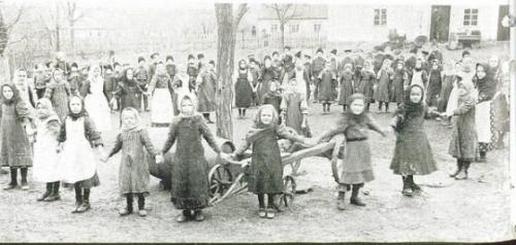Ostsiedlung- Eastward German Migrations
Overview: A Long History of Eastward Migration

The movement of German-speaking populations into vast regions of Northeastern, Central, and Eastern Europe is a complex historical process known as Ostsiedlung (literally "Settling eastwards") or the German eastward expansion. This period ran from approximately the early 1300s to the early 1870s.
During these centuries, the population of Germans in Eastern Europe grew to more than 18 million people, establishing communities stretching from the Oder-Neisse River (in the West) to the Ural Mountains (in the East) and from the Baltic Sea (in the North) to Turkey (in the South).
Historical Context
Medieval Period (High Middle Ages)
The initial phase of Ostsiedlung was stimulated by population growth in the Rhenish, Flemish, and Saxon territories of the Holy Roman Empire. Peoples moved eastwards into the less-populated Baltic region and Poland.
- Support: These movements were largely supported by the German nobility, Slavic kings and dukes, and the medieval Church.
- Nature of Settlement: The majority of this settlement was peaceful, although it sometimes occurred at the expense of Slavs and pagan Balts (e.g., during the Northern Crusades).
- Teutonic Order: The settlement accelerated along the Baltic Sea with the advent and expansion of the Teutonic Order.
Early Modern and Modern Eras
Later migrations were often driven by religious persecution, economic opportunity, or explicit invitations from rulers.
A significant, though challenging, aspect of German genealogy in the East is the eventual displacement of these communities after World War I and especially World War II, a process often referred to as the Eastern German Diaspora (or Die Vertreibung).
Pre-War German Population by Religion (According to Gerhard Reichling) [^1]
This table illustrates the religious demographics of German populations in key regions prior to the major expulsions:
| Region | Prewar German Population | Protestant | Roman Catholic | Other |
|---|---|---|---|---|
| Former eastern territories of Germany | 9,575,000 | 6,411,000 | 2,862,000 | 302,000 |
| Danzig | 380,000 | 215,000 | 147,000 | 18,000 |
| Poland (pre-WW2 borders) | 1,200,000 | 736,000 | 457,000 | 7,000 |
| Czechoslovakia | 3,544,000 | 166,000 | - | - |
Key Emigration Periods to Eastern Europe (1763-1862)
The following table highlights major periods, origins, and settlement areas, particularly for Russia/Ukraine, as referenced in the genealogical records.
| Period | Countries/Regions of Origin | Areas of Settlement | Noteworthy Groups |
|---|---|---|---|
| 1763–68 | Hesse, Rhineland, Palatinate, Saxony, Württemberg, Switzerland | Volga area | Evangelical & Catholic settlements |
| 1789–90 | Danzig, West Prussia | Chortitza Colony | Mennonites |
| 1804–06 | Alsace, Baden, Palatinate, Württemberg | Beresan and Odessa areas | Evangelical & Catholic settlements |
| 1812–27 | Württemberg, Baden, Hesse | Prischib, Molotschna | Evangelical (including Swabian colonies near Berdjansk) |
| 1814–34 | Württemberg, Prussia, Poland, Bavaria | Bessarabia, Colonies near Odessa | Mixed religious settlements |
| 1823–42 | Danzig, West Prussia, Rhine-Hesse, Baden | Grunau area (Planer colonies) | Evangelical & Catholic settlements |
| 1853 | Danzig, West Prussia | Samara region | Mennonites |
| 1859–62 | Last major emigration from Germany | Various |
Sources and Further Reading
[^1]: Population data sourced from Gerhard Reichling, Die deutschen Vertriebenen in Zahlen: Umsiedler, Aussiedler und Spätaussiedler. Part of this data is widely cited in genealogical literature concerning the German diaspora.
- ManyRoads - German-Prussian Genealogy Aids: The original source page for this synopsis, containing additional links and resources.
- The Society for German Genealogy in Eastern Europe (SGGEE): Excellent resources, maps, and archival information focused on German records in Volhynia, Bessarabia, and other eastern regions.
- Link: https://www.sggee.org/
- Germans from Russia Heritage Society (GRHS): Specialized resources for the descendants of Germans who settled in Russia and the Black Sea region.
- Link: https://www.grhs.org/
- FamilySearch Wiki - German Empire Genealogy: Comprehensive guides for finding records within the former German territories, including East Prussia and Pomerania.
Credits and Licensing
Compiled by: Mark Rabideau, Opa & Professional Genealogist.
All materials licensed: CC BY-ND 4.0 by eirenicon llc.